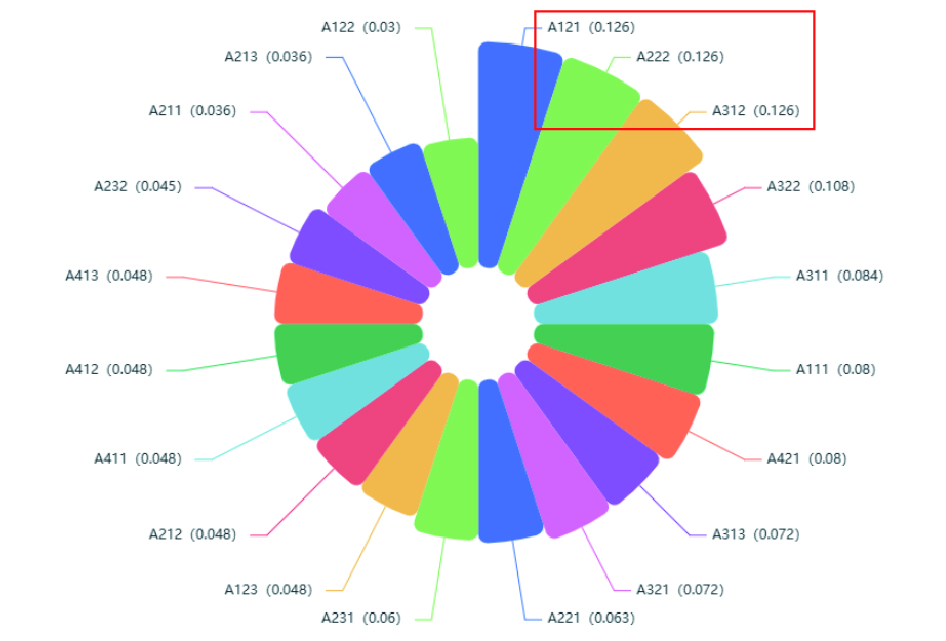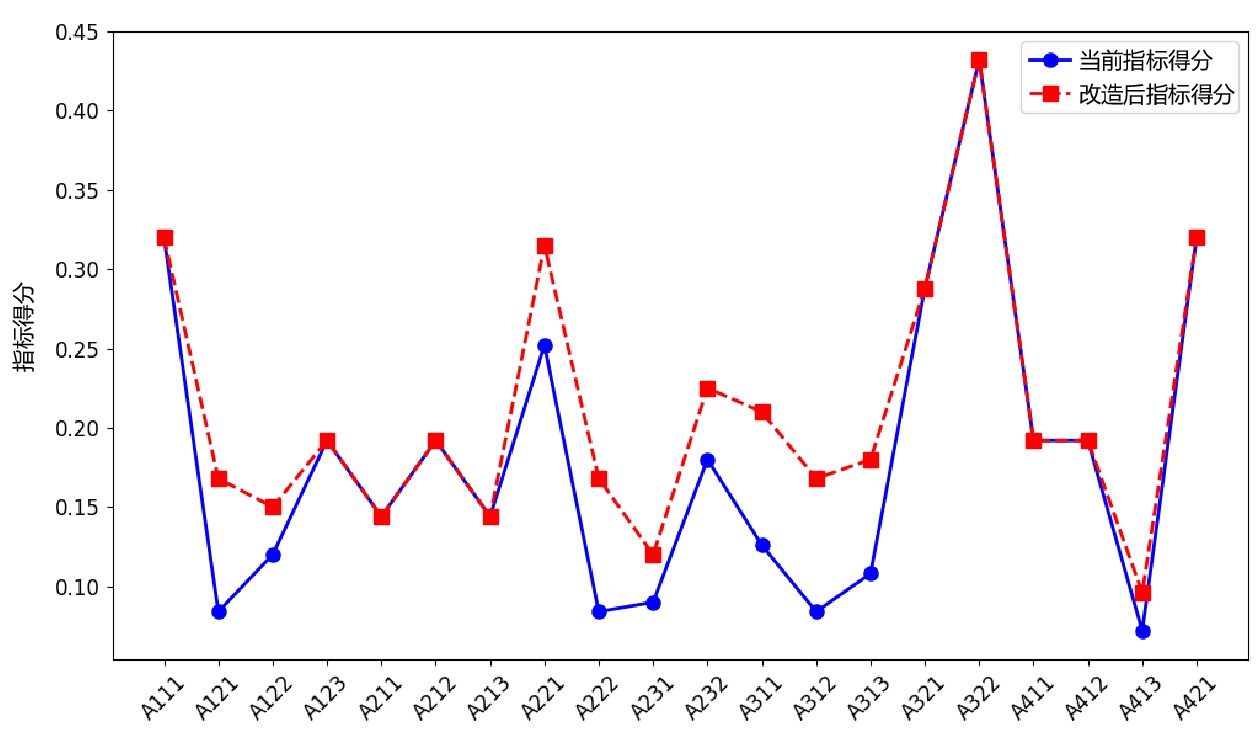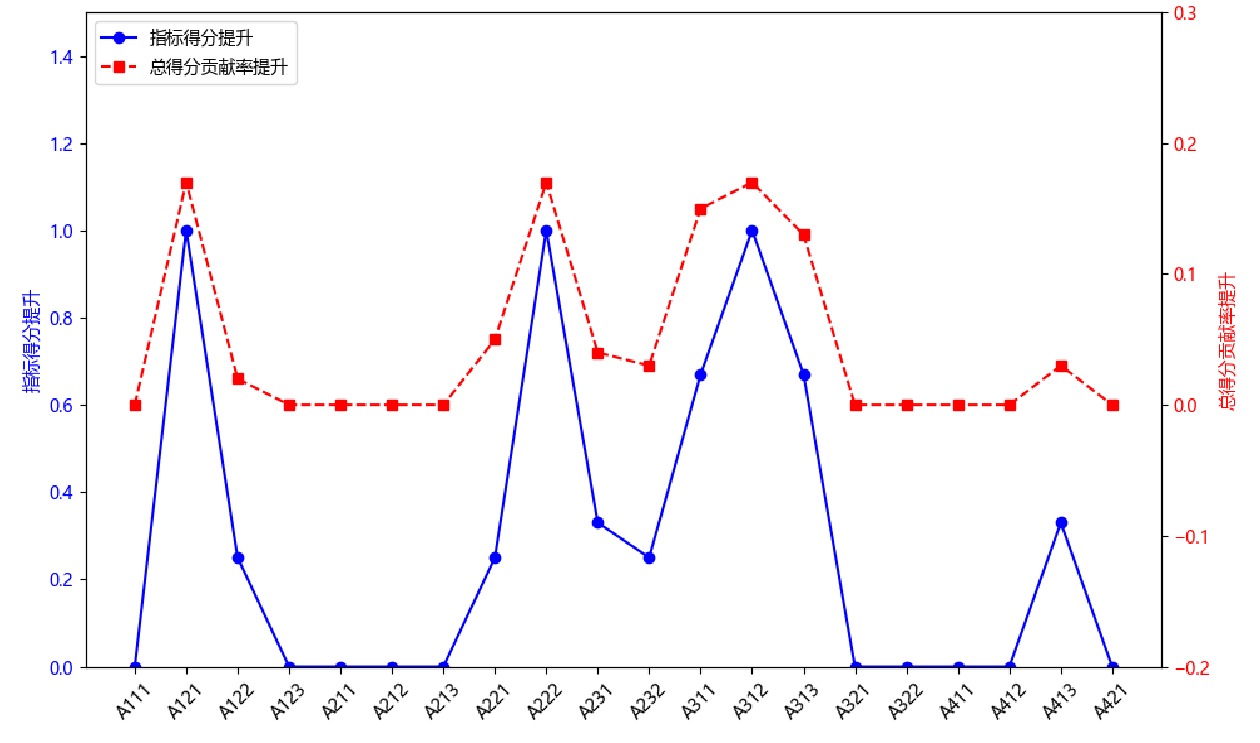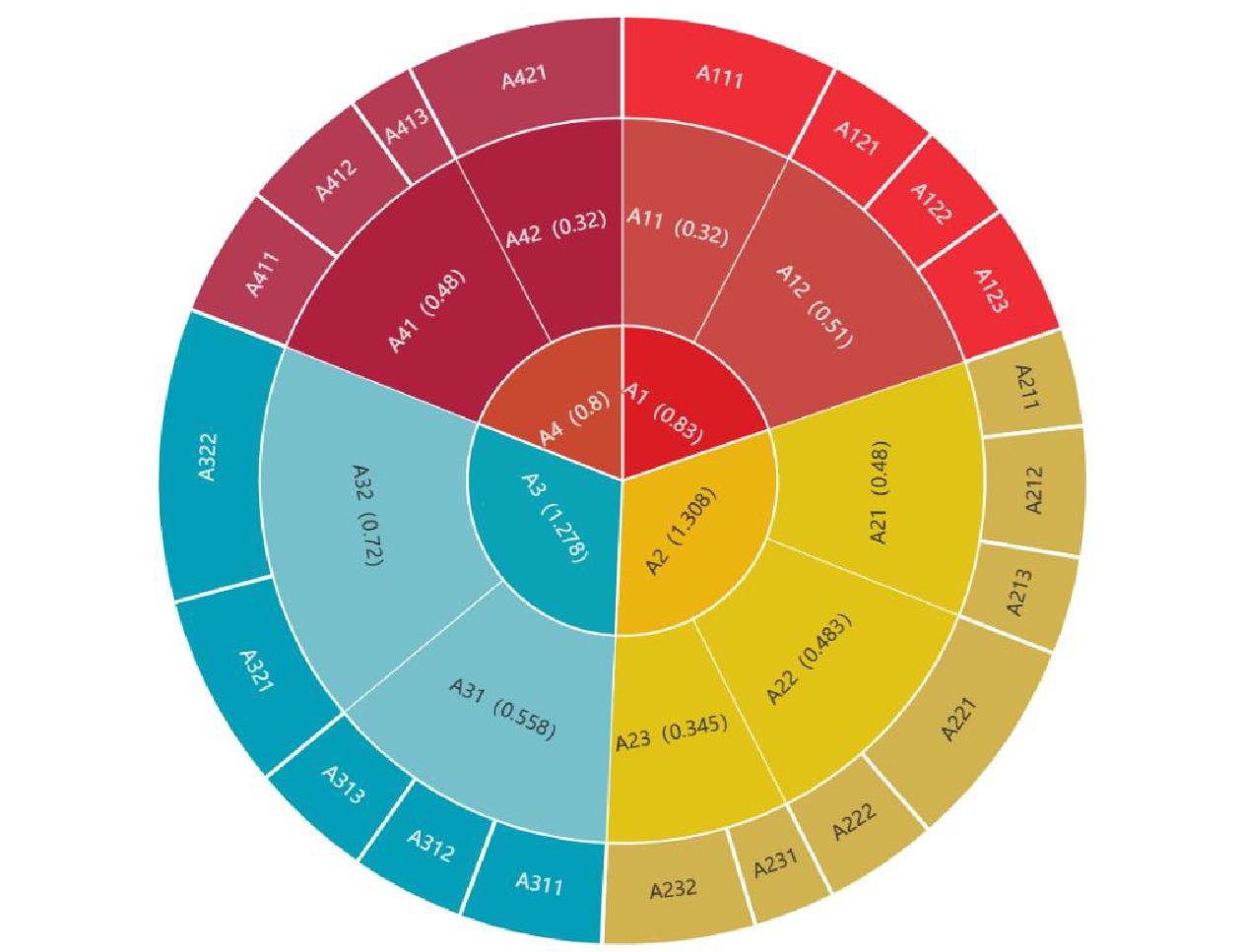Evaluation method for intercity railway public transportation operation based on interconnectivity
-
摘要:
为了在城际铁路公交化改造过程中全面、科学地评价运营方案的公交化程度,文章基于互联互通视角,从公交化内涵和构成要素出发,确立体现公交化特征的技术指标,并以此为基础构建具有明确取值范围、理想值、评价标准的评价指标,形成具有多层次结构的城际铁路公交化运营评价指标体系。针对该评价指标体系,设计了包括基于理想值的指标项标准化量度处理、多层次指标权重计算、公交化运营方案总体评价和公交化瓶颈计算在内的公交化运营评价方法。对粤港澳大湾区内莞惠(东莞-惠州)城际铁路、穗莞深(广州-东莞-深圳)城际铁路构成的城际铁路系统的公交化运营改造方案进行综合评价和对比分析,结果表明,当前运营方案所存在的平均客流停站服务比、最大断面满载率及中转时间比例系数这3方面瓶颈在改造方案中均得到显著改善。该评价方法可为其他城际铁路系统的运营评价提供参考。
Abstract:In order to comprehensively and scientifically evaluate the degree of public transportation in the process of intercity railway public transportation transformation, this paper was based on the perspective of interconnectivity, started from the connotation and constituent elements of public transportation, established technical indicators that reflect the characteristics of public transportation, and based on this, constructed evaluation indicators with clear value ranges, ideal values, and evaluation standards, formed a multi-level structure of intercity railway public transportation operation evaluation index system. Regarding this evaluation index system, the paper designed a public transportation operation evaluation method including standardized measurement processing of indicator items based on ideal values, multi-level indicator weight calculation, overall evaluation of public transportation operation plans, and calculation of public transportation bottlenecks. The comprehensive evaluation and comparative analysis of the transformation plan for the intercity railway system consisting of the Dongguan-Huizhou intercity railway and the Guangzhou-Dongguan-Shenzhen intercity railway in the Guangdong Hong Kong Macao Greater Bay Area indicate that, the bottlenecks in the current operation plan, including the average passenger flow stop to stop service ratio, maximum section full load rate, and transfer time ratio coefficient, have been significantly improved in the renovation plan. This evaluation method can provide reference for the operation evaluation of other intercity railway systems.
-
-
表 1 城际铁路公交化运营评价指标体系结构
Ⅰ级指标 Ⅱ级指标 技术指标 评价指标 速度指标A1 列车速度A11 平均旅行速度 旅行速度系数A111 停站服务A12 平均客流停站服务比 平均客流停站服务比A121 最大客流停站服务比 最大客流停站服务比A122 客流乘车经停比 客流乘车经停比A123 能力指标A2 运营能力A21 列车每日运用公里数 列车运用效率A211 乘客平均运距 客流乘-运距比A212 列车平均运距 列车运距系数A213 线路能力利用率A22 平均满载率 平均满载率A221 最大断面满载率 最大断面满载率A222 交路段能力利用率A23 交路段最大满载率 交路段最大满载率A231 交路段平均满载率 交路段平均满载率A232 服务质量指标A3 跨线服务A31 乘客平均换乘次数 乘客平均换乘次数A311 中转时间比例系数 中转时间比例系数A312 均匀候车比 均匀候车比A313 本线开行频率A32 平均行车间隔 平均行车间隔A321 分时段最大开行间隔 公交化频率实现程度A322 竞争力指标A4 城际铁路的时间-价格竞争力A41 城际各方式的出行时间 出行时间轨道交通系数A411 城际各方式的价格 出行价格轨道交通系数A412 城际各方式的时价比 轨道交通时价比系数A413 乘客周转量A42 乘客周转量占有率 乘客周转量占有率A421 表 2 城际铁路公交化运营评价指标的类型和取值空间
指标类型 评价指标 取值空间 正向型 A111、A123、A211、A212、A213、A421 [0,1] 适中型 A121、A122、A221、A222、A231、A232 [0,1] A313 [0,+∞) 负向型 A312 [0,1] A311 [1,+∞) A322、A411、A412、A413 [0,+∞) A321 最小、最大行车间隔之间 表 3 城际铁路公交化运营评价指标评分标准
评价指标 评价分值 5 4 3 2 1 A111 [0.9,1) [0.85,0.9) [0.8,0.85) [0.75,0.8) (0.7,0.75) A121 [0.5,0.6] [0.45,0.5)∪(0.6,0.65] [0.4,0.45)∪ (0.65,0.7] [0.35,0.4)∪ (0.7,0.75] [0.3,0.35) ∪ (0.75,0.8] A122 [0.55,0.65] [0.5,0.55)∪ (0.65,0.7] [0.45,0.5)∪ (0.7,0.75] [0.4,0.45)∪ (0.75,0.8] [0.35,0.4)∪ (0.8,0.85] A123 [0.85,1] [0.7,0.85) [0.55,0.7) [0.4,0.55) (0,0.4) A211 [0.9,1] [0.85,0.9) [0.8,0.85) [0.7,0.8) (0,0.7) A212 [0.8,1) [0.65,0.8) [0.55,0.65) [0.4,0.55) (0,0.4) A213 [0.85,1) [0.7,0.85) [0.55,0.7) [0.4,0.55) (0,0.4) A221 [0.7,0.8] [0.6,0.7)∪ (0.8,0.85] [0.5,0.6)∪(0.85,0.95] [0.35,0.5)∪(0.95,1) (0,0.35) A222 [0.75,0.85] [0.65,0.75)∪ (0.85,0.95] [0.55,0.65)∪ (0.95,0.98] [0.45,0.55)∪(0.98,1) (0,0.45) A231 [0.75,0.85] [0.65,0.75)∪ (0.85,0.95] [0.55,0.65)∪ (0.95,0.98] [0.45,0.55)∪(0.98,1) (0,0.45) A232 [0.7,0.8] [0.6,0.7)∪(0.8,0.85] [0.5,0.6)∪ (0.85,0.95] [0.35,0.5)∪(0.95,1) (0,0.35) A311 (1,1.2] (1.2,1.4] (1.4,1.6] (1.6,1.8] (1.8,+∞) A312 (0,0.05] (0.05,0.08] (0.08,0.11] (0.11,0.14] (0.14,1) A313 [0.95,1.05] [0.9,0.95)∪ (1.05,1.1] [0.85,0.9)∪ (1.1,1.15] [0.8,0.85)∪(1.15,1.2] (0,0.8)∪(1.2,+∞] A321 (2,6] (6,10] (10,14] (14,20] (20,60) A322 (0,4] (4,7] (7,10] (10,15] (15,+∞] A411 (0,0.7] (0.7,0.8] (0.8,0.9] (0.9,1] (1,+∞) A412 (0,0.7] (0.7,0.8] (0.8,0.9] (0.9,1] (1,+∞) A413 (0,0.8] (0.8,0.9] (0.9,0.95] (0.95,1] (1,+∞) A421 [0.4,1) [0.3,0.4) [0.2,0.3) [0.1,0.2) (0,0.1) 表 4 指标权重
Ⅰ级指标 权重 Ⅱ级指标 权重 速度指标A1 0.2 列车速度A11 0.08 停站服务A12 0.12 能力指标A2 0.3 运营能力A21 0.12 线路能力利用率A22 0.105 交路段能力利用率A23 0.075 服务质量指标A3 0.3 跨线服务A31 0.12 本线开行频率A32 0.18 竞争力指标A4 0.2 城际铁路的时间-价格竞争力A41 0.12 乘客周转量A42 0.08 表 5 2个方案的评价指标得分
指标层Aiii 当前运营方案得分 改造方案得分 指标层Aiii 当前运营方案得分 改造方案得分 旅行速度系数A111 4 4 交路段平均满载率A232 4 5 平均客流停站服务比A121 2 4 乘客平均换乘次数A311 3 5 最大客流停站服务比A122 4 5 中转时间比例系数A312 2 4 客流乘车经停比A123 4 4 均匀候车比A313 3 5 列车运用效率A211 4 4 平均行车间隔A321 4 4 客流乘-运距比A212 4 4 公交化频率实现程度A322 4 4 列车运距系数A213 4 4 出行时间轨道交通系数A411 4 4 平均满载率A221 4 5 出行费用轨道交通系数A412 4 4 最大断面满载率A222 2 4 轨道交通时价比系数A413 3 4 交路段最大满载率A231 3 4 乘客周转量占有率占比A421 4 4 -
[1] 徐行方. “公交化”列车的概念及其开行条件[J]. 铁道运输与经济,2000,22(10):21-23. DOI: 10.3969/j.issn.1003-1421.2000.10.008 [2] 冯启富. 关于京津城际轨道交通“公交化”的研究[J]. 铁道经济研究,2006(3):28-31. DOI: 10.3969/j.issn.1004-9746.2006.03.005 [3] Jamili A, Aghaee M P. Robust stop-skipping patterns in urban railway operations under traffic alteration situation[J]. Transportation Research Part C: Emerging Technologies, 2015, 61: 63-74. DOI: 10.1016/j.trc.2015.09.013
[4] Miller E J. Embracing addiction: drug courts and the false promise of judicial interventionism[J]. Ohio State Law Journal, 2004, 65(3): 1479-1576.
[5] 张 涛,孙鹏举,曲子贤. 高峰时段城际铁路列车停站方案研究[J]. 铁道运输与经济,2021,43(2):7-15. [6] 郑 宁. 长株潭城际铁路公交化运营列车开行方案研究[D]. 北京:中国铁道科学研究院,2022. [7] 禹丹丹,徐会杰,姚娟娟,等. 国外都市圈轨道交通互联互通运营对我国的启示[J]. 综合运输,2019,41(5):115-120. [8] 杨 斌,阳 博,徐旭辉. 粤港澳大湾区城际铁路融合发展策略研究[J]. 铁道标准设计,2023,67(9):7-13. [9] 杨高峰. 基于互联互通的粤港澳大湾区铁路运营服务优化研究[D]. 北京:中国铁道科学研究院,2022. [10] Isaai M T, Kanani A, Tootoonchi M, et al. Intelligent timetable evaluation using fuzzy AHP[J]. Expert Systems with Applications, 2011, 38(4): 3718-3723. DOI: 10.1016/j.eswa.2010.09.030
[11] Chen J, Nie L, Fu H L. Comparative analysis of line plans of intercity railway using different train stopping patterns[C]//2018 8th International Conference on Logistics, Informatics and Service Sciences (LISS), 3-6 August, 2018, Toronto, ON, Canada. New York, USA: IEEE, 2018. 1-6.
[12] 张嘉敏,张嘉锐. 成网条件下沪宁杭城际高铁公交化开行方案研究[J]. 铁路计算机应用,2018,27(2):35-38. DOI: 10.3969/j.issn.1005-8451.2018.02.011 [13] 曲思源,徐行方. 基于DEA的城际铁路列车开行方案评价[J]. 华东交通大学学报,2012,29(1):79-85,94. DOI: 10.3969/j.issn.1005-0523.2012.01.016 [14] 陶思宇. 铁路旅客列车开行方案经济效益评价研究及其计算机实现[D]. 南昌:华东交通大学,2006. [15] 李 然. 基于效益效率综合优化的高速铁路列车开行方案评价与调整研究[D]. 成都:西南交通大学,2020. [16] 廖 勇. 公交化城际列车开行间隔优化[J]. 铁道学报,2010,32(1):8-12. DOI: 10.3969/j.issn.1001-8360.2010.01.002 [17] 中南大学. 既有城际铁路公交化改造及多网融合关键技术研究与应用项目研究报告[R]. 广州:广州地铁设计研究院有限公司,2024. -
期刊类型引用(1)
1. 徐希鹏,金伟,郑天锐,周青,成军强. 兼具防滑与信号监测功能的轨道交通车辆用轴箱. 装备机械. 2022(03): 21-24+41 .  百度学术
百度学术
其他类型引用(1)





 下载:
下载:






